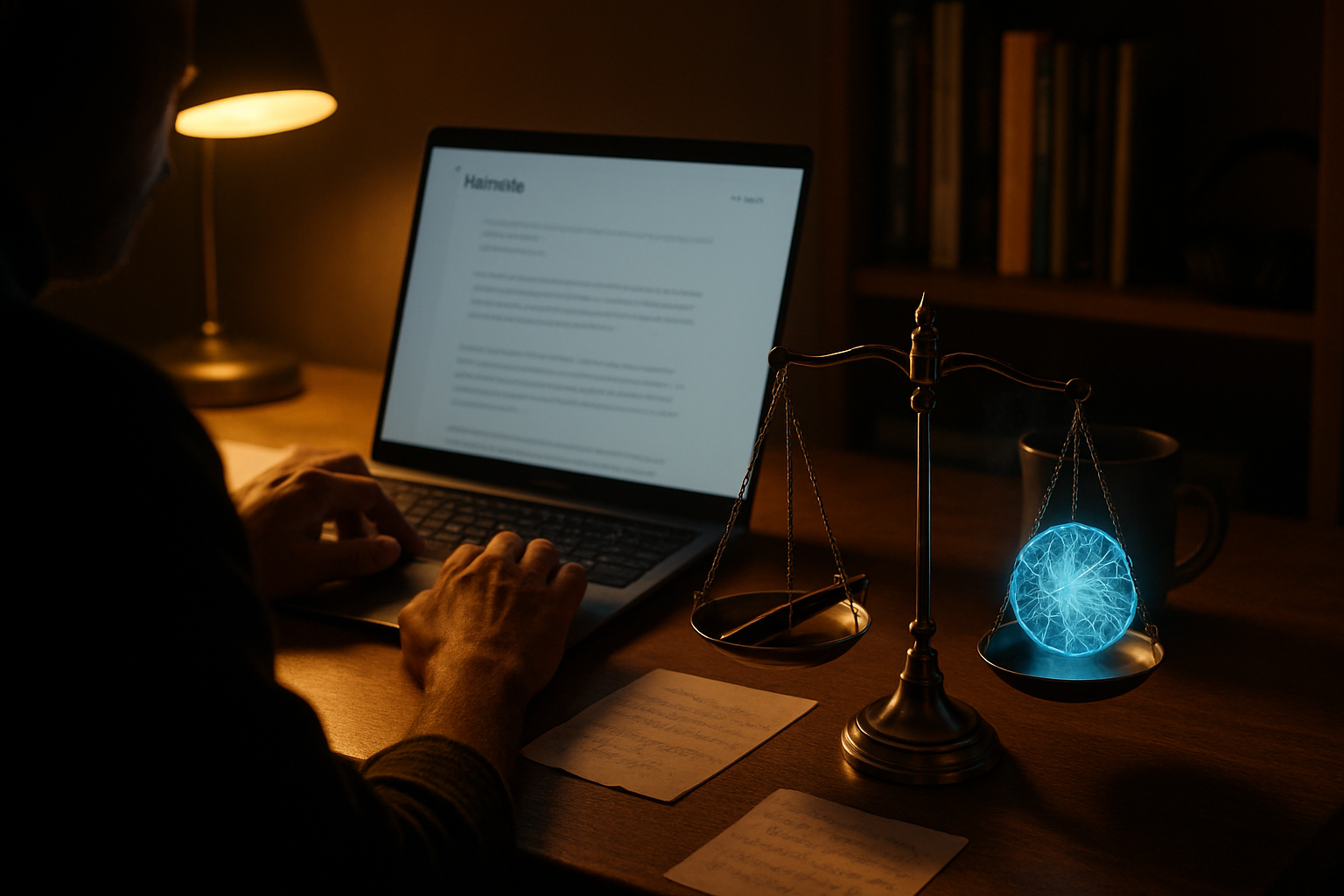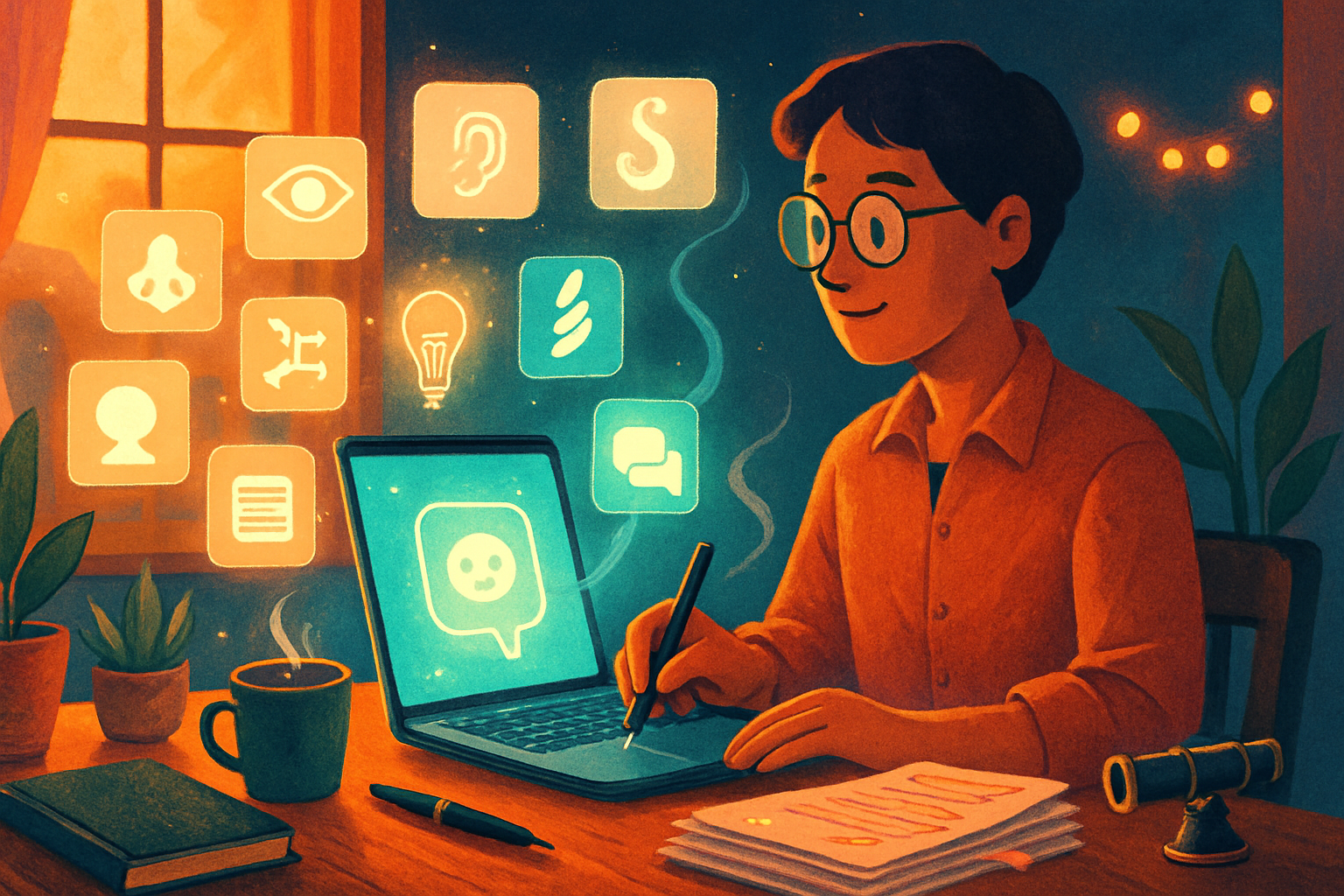· creativity · 7 min read
The Controversial Truth: How Sudowrite Is Changing the Landscape of Writing
An in-depth look at how Sudowrite and similar AI-assistants are transforming writing - and why that transformation has stirred heated ethical, legal, and creative debates. This piece explains the stakes, shares composite firsthand user experiences, and offers practical guidance for writers, editors, and platforms.

Outcome first: by the time you finish this article you will be able to
- Explain why Sudowrite and tools like it have provoked intense ethical debate.
- Weigh the practical benefits against the legal and creative risks.
- Apply clear, actionable best practices if you use or commission AI-assisted writing.
Why start here? Because the tech is no longer hypothetical. It’s in the hands of novelists, journalists, ad copywriters, students, and content teams. Use it well, and you speed up workflows, escape writer’s block, and discover new creative directions. Use it poorly, and you risk misattribution, legal headaches, and the dilution of voice.
What Sudowrite actually does (short primer)
Sudowrite is an AI-assisted writing tool that helps writers draft, expand, rephrase, and brainstorm prose. It uses large language models to generate text based on prompts and partial drafts. Writers can ask for alternatives, request changes in tone, or ask for scene ideas and character suggestions. For more details and feature descriptions, see the official site: https://www.sudowrite.com.
Quick take: it augments ideation and iteration. It isn’t a ghostwriter that reliably produces finished, publishable creative work without human input. It is a collaborator - one that can be remarkably persuasive and eerily fluent.
The benefits most users actually feel
- Speed - drafts and pivots arrive far faster than staring at a blank page.
- Escape hatch - it breaks creative deadlocks with fresh openings and choices.
- Iteration at scale - multiple tonal or structural variants are easy to generate.
- Learning - novice writers can study how different phrasings work in context.
These benefits explain why adoption has been rapid. When a tool transforms time-to-first-draft, teams and individual creators change workflows almost overnight.
The ethical battlegrounds
There are at least four persistent ethical issues at the center of the debate: authorship and copyright, transparency and disclosure, labor and fairness, and quality/attribution problems like hallucination and inadvertent plagiarism.
Authorship and copyright
Who owns a piece when a human and an AI both shape it? The U.S. Copyright Office has stated that works produced solely by AI with no human authorship are not eligible for copyright. See official guidance on AI and copyright: https://www.copyright.gov/policy/artificial-intelligence/.
But real projects are rarely “solely” AI. They are mixes: a human provides prompts, selects outputs, edits, and stitches together pieces. How much human contribution is enough for authorship? The law is still catching up.
Implications:
- Creators may assume ownership but later face challenges if courts or registries require demonstrable human authorship.
- Publishers and platforms may impose their own rules about disclosure or rights assignment.
Transparency and disclosure
Should readers be told when AI contributed to a text? Ethically, many argue yes. Practically, many writers worry disclosure will devalue work or trigger editorial pushback.
Transparency matters for trust. Readers use signals about process to evaluate credibility - especially in journalism, academic work, or nonfiction.
Labor and fairness
AI tools shift who does what. They can make a single writer more productive - but they can also concentrate advantage among those with money, technical fluency, or institutional support.
There are also concerns about how training data was gathered. Was copyrighted text scraped without consent? If so, is the tool indirectly profiting from unpaid creators?
Quality, hallucinations, and unintentional plagiarism
Language models occasionally produce convincing falsehoods or novel text that closely echoes training sources. For writers, that means a risk: an undetected passage could be too close to an existing work or repeat factual errors.
This is not hypothetical. Editors and legal teams increasingly flag AI-derived passages for review and fact-checking in professional settings.
Composite firsthand user vignettes (anonymized and representative)
Below are condensed, composite accounts based on public reviews, forum posts in writing communities, and conversations with writers who have used Sudowrite. These are labeled as composites to protect privacy and to reflect patterns rather than single-source anecdotes.
“The Sprinter”
- A freelance copywriter used Sudowrite to generate dozens of headline and CTA variants in an afternoon. Productivity spiked. Client satisfaction remained high. The writer now bills more projects per month.
“The Novelist”
- A mid-career novelist uses it to escape structural problems - ask for scene openings, run alternatives for character beats, and rephrase dialogue. The novelist reported that while Sudowrite often supplied viable options, maintaining voice required heavy curation. The final manuscript was still branded clearly as the author’s work.
“The Skeptic Editor”
- An editor for a small magazine found one submission that the author admitted was heavily AI-assisted only after publication. The editor instituted a disclosure policy.
“The Student”
- A university student used Sudowrite to rephrase an essay. The school suspected plagiarism because the text matched online material too closely. The student argued the tool helped them compose; the instructor argued they had bypassed learning.
These vignettes show the spectrum: clear productivity gains, creative expansion, editorial friction, and academic risk.
The legal and policy landscape (where we stand now)
- Copyright - As noted, U.S. guidance disfavors registering works without human authorship. However, hybrid works complicate the rule. See
- Policy frameworks - UNESCO and other international bodies have released high-level recommendations about responsible AI use (including transparency and human oversight). See UNESCO’s work on AI ethics:
- Platform policy - Many publishers and platforms are still drafting rules. Some require disclosure of AI assistance; others ban it outright for certain content types.
Expect continued legal disputes and evolving platform policies. That means contractual clarity is essential for anyone commissioning or producing work with AI assistance.
Practical guidance for writers and editors (concrete steps)
If you write with Sudowrite or manage someone who does, here are pragmatic, defensible practices.
Decide on disclosure policy upfront
- For journalism, academia, and client work, disclose use and be specific about scope (e.g., “AI used for ideation and phrasing suggestions; human edited and verified facts”).
Keep provenance records
- Save prompts, generated outputs, and timestamped edits. Those records help demonstrate human contribution and defend against claims.
Use human-in-the-loop workflows
- Treat the AI as a brainstorming partner, not an autopilot. Always revise for voice, accuracy, and context.
Fact-check everything
- Force-check facts, names, and dates. If an AI invents a detail, you must catch it before publication.
Address licensing up front
- Clarify with clients or employers who owns the output, especially if the tool’s terms grant the vendor rights.
Train teams on bias and data provenance
- Teach editors to spot subtle bias, derivative phrasing, or ethical red flags.
Keep a diversity of tools and human perspectives
- Don’t outsource judgment. Use multiple reviewers to preserve creative uniqueness and fairness.
What platforms (including Sudowrite) could do better
- Transparency about training data and provenance. Users deserve clarity about what data shaped the model.
- Exportable provenance logs that show which outputs were produced when and which prompts produced them.
- Built-in attribution templates that make disclosure frictionless for creators.
- Better plagiarism and similarity checking inside the tool so users are warned when generated text resembles existing sources.
Some of these are technical and some are policy choices. But a trajectory toward built-in transparency would reduce many ethical frictions.
Where this is heading (and the hard trade-offs)
AI will keep becoming better at producing human-like prose. That raises trade-offs we can already see:
- Efficiency vs. craft - Faster drafting may reduce time spent on honing distinctive voice.
- Accessibility vs. gatekeeping - Tools democratize some skills, but those without access may fall further behind.
- Innovation vs. appropriation - Models trained on existing work can create new combinations - but at the cost of profiting (indirectly) from creators who weren’t asked.
None of these trade-offs are binary. They require rules, norms, and contractual practices that balance incentives and protect creators.
A short checklist before you publish AI-assisted writing
- Did you disclose AI use where required or expected?
- Do you have provenance records (prompts, outputs, edits)?
- Have you fully edited the output for voice and accuracy?
- Is there an explicit agreement about ownership and licensing with any collaborators or clients?
- Did you scan for unintended similarity to existing texts?
If any answer is “no,” pause and resolve it before publishing.
Final thought - the controversial truth
Sudowrite and tools like it are neither salvation nor scam. They are accelerants: they speed up creativity and also speed up mistakes. They expand what a single writer can produce and also complicate what counts as authorship. They democratize some forms of craft and risk concentrating advantage in others.
If you care about writing as a craft, you must adopt practices that preserve human judgment: disclose, document, edit, and insist on human accountability. Use Sudowrite to amplify your thought - but never to replace the hard, human decisions that make writing meaningful. That combination - human care plus thoughtful augmentation - is the only defensible path forward.
References
- Sudowrite - official site: https://www.sudowrite.com
- U.S. Copyright Office - Artificial Intelligence and Copyright: https://www.copyright.gov/policy/artificial-intelligence/
- UNESCO - Recommendation on the Ethics of Artificial Intelligence: https://en.unesco.org/artificial-intelligence/ethics
- Electronic Frontier Foundation - AI-related resources: https://www.eff.org/issues/ai



